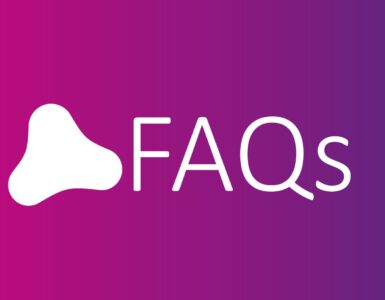Physicians expect biopsy or tumor resection results from pathology daily to make diagnoses and find appropriate therapies for the patients. A 2016 interview-based study of internal medicine specialists addresses supply and demand in pathology: It reveals that approximately 66 % of clinical decisions are based on pathology and laboratory medicine results [1]. In oncology it is safe to claim that 100 % of cancer is diagnosed by pathology. Therefore, pathology represents one of the most important pillars of the entire healthcare system. The demand for pathology services has risen sharply in recent years and will continue to do so in the future.
Reasons for this include the rising world population, the increasing life expectancy of people, and a resulting predicted increase in cancer cases. But also, the progress in medicine, e.g., in innovative treatment methods for cancer, requires a more comprehensive analysis of tissue samples for specific markers. In the everyday routine, the trend of personalized medicine implies that today’s pathologists additionally analyze several IHC stains or even molecular tests, while in the past a pathologist would only look at a H&E standard stain. This enables more accurate diagnosis and treatment decision, but also increases the workload per patient.

Pathology workforce levels are not in line with the growing demand
On the one hand, the average age of pathology professionals is high, with about three quarters of the personnel being over forty years old [3]. In addition, there is a growing lack of next generation pathologists: according to a survey of resident physicians in Germany, only 0.32 % of resident physicians decide to become pathology specialists [4]. Even now, training positions are hard to recruit for.
On the other hand, the pathologists who have been active up to now are mainly occupied with routine work. These are highly time-consuming and leave little time for additional research in the field of pathology and further development of therapies and medications.
Currently, about 35 % of pathology professionals are at the limit of their capacity [5]. They cannot cope with the demand, so patients sometimes have to wait more than 60 days to start their treatment [6].
A closer look at the world map also reveals other gaps in pathology. In poorer countries, there is usually little to no pathology staff available [7]. This development could lead to a further decline in the health situation in these countries.

Can digitization of pathology be a solution?
The integration of digital solutions in pathology can make workflows more efficient, reduce staffing and costs. Five years after the introduction of digital pathology, $ 12.4 million has already been saved for a laboratory with 219,000 orders per year, according to a paper published by the National Center for Biotechnology Information (NCBI) [8].
The goal of digitization in pathology is not to replace pathologists with computers, but to use computers for simple and time-consuming routine work. Slide scanners are used to scan the pathological sections with high-resolution microscopes and store them as digital so called whole-slide-images (WSIs). These digital slides are the basis for algorithms that analyze the microscopy images and provide quantified results to the pathologist. For example, cells can be counted easily, the tumor-stroma ratio can by determined, or complex markers can be quantified. The possibilities of artificial intelligence can also improve the quality of the analysis, since even minimal changes in the tissue can be detected that are not visible to the human eye. The communication between pathology experts is also improved as they can easily share the digitized images and discuss them together.
But will pathologists become less important in the future?
Absolutely not! On the contrary, their work will become even more important, as they will be able to invest more time in complex cases and research. This will allow them to make a major contribution to improved healthcare. In addition, analyses performed using artificial intelligence will be verified by pathology professionals. For example, digital image analysis is already widely used in radiology and has a high level of acceptance among physicians and patients.
Digital pathology can also be used to improve healthcare needs in poorer countries. Making the technology widely available would give patients better access to healthcare.
The technical possibilities for digital pathology already exist. Advanced digital scanners combined with AI-based analysis software are already being used in laboratories, but primarily in research applications. However, the interest and desire to improve the situation of pathology professionals is growing day by day. We must advance digitization in the healthcare system by using digital pathology as a standard and acting sustainably in the interests of the healthcare professionals. Only with the help of digital pathology is it possible to cope with the high demand in the pathology field and improve patient treatment. After the introduction of immunohistochemistry and molecular pathology, computational pathology is regarded by many as the 3rd revolution in pathology.
A new chapter in pathology has already started. Get started with Digital Pathology today!
Want to use digital image analysis for your research? Download our MIKAIA® software and get started with digital pathology today!
References
[1] Wilson et al, The Lancet, Vol 391 May 12, 2018; Primary source: Rohr UP, Binder C, Dieterle T, et al. The value of in-vitro diagnostic testing in medical practice: a status report. PLoS One 2016;11: e0149856. [2] International Agency for Research on Cancer. (13. Januar, 2021). Prognostizierte Anzahl neuer Krebsfälle weltweit im Zeitraum von 2020 bis 2040 . In Statista. Zugriff am 05. Januar 2023, von https://de.statista.com/statistik/daten/studie/1201649/umfrage/prognostizierte-anzahl-neuer-krebsfaelle-weltweit/ [3] https://www.zippia.com/pathologist-jobs/demographics/ [4] https://www.hartmannbund.de/wp-content/uploads/2021/04/Assistenzarztumfrage_2021_Ergebnisse-komplett.pdf [5] Medscape Physician Lifestyle & Happiness Report 2022 https://www.medscape.com/sites/public/lifestyle/2022 [6] https://www.rcpath.org/uploads/assets/952a934d-2ec3-48c9-a8e6e00fcdca700f/Meeting-Pathology-Demand-Histopathology-Workforce-Census-2018.pdf [7] https://thepathologist.com/outside-the-lab/constant-demand-patchy-supply [8] https://www.wizardhealth.co/future-now-digital-pathology/?lang=enImage copyright: © Fraunhofer IIS







Add comment